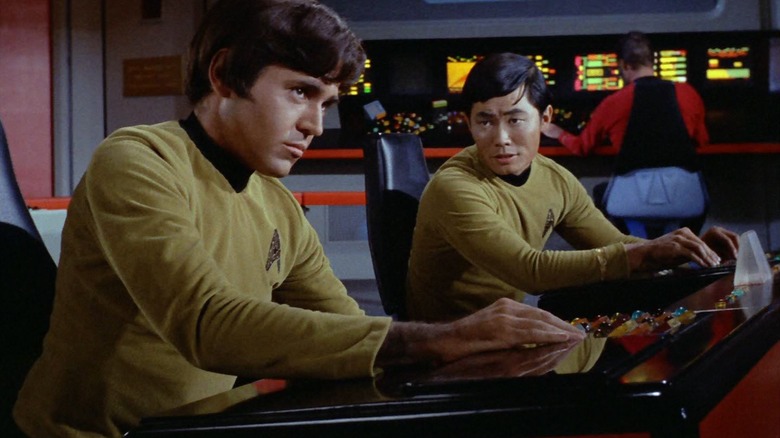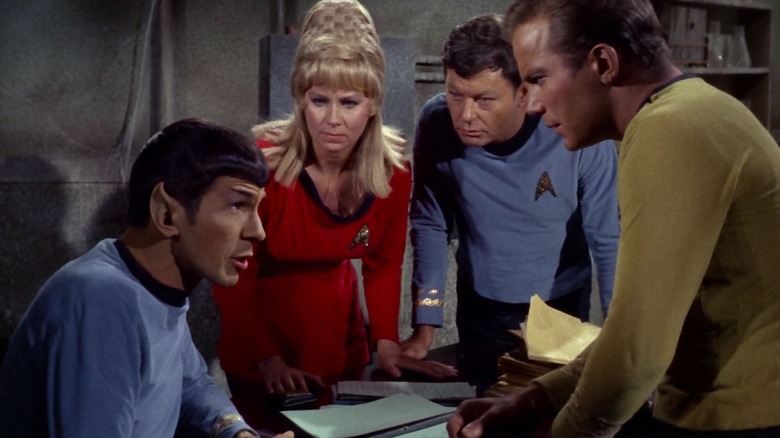Gene Roddenbury “Star Trek” There can be a post -capitalist utopia in which no character longs for wealth, but here in our society, its actors can live with this luxury.
Trekkies will be able to tell you that Star Trek was not a huge blow when it was first shown from 1966 to 1969. It certainly had a small and passionate set of fans, and the show was retained at least once, thanks to a coordinated letter writing campaign, but it was never the Top 10 show type in rating. Star Trek will not become a cultural phenomenon, while in the mid -70s it began to ventilate repetitions. Until then, it was more accessible, new superfanes appeared, and the Star Trek conventions became a case. The gene Roddenbury appeared in these conventions, and he began to repeat his show with fan encouragement, realizing that he had really created a utopian text.
Meanwhile, Star Trek stars were able to use their limited income from the show to conventions because they did not get money in the remaining. How dishonest can seem, the original series – William Shatter, Leonard Nimoy, Nichelle Nichols, Deforest Kelley, George Takei, Walter Keonig and James Doohan – did not receive any royalties for these 70s. Doohans, in an interview with the Fort Worth Star-Telegram in 1979 (quoted Heroes & Icons Site), acknowledged that neither he nor his co -stars received a dime from Star Trek repetitions after 1971. 2020 in the year William Shatter cited Twitter on the site that he does not receive any royalty for something “Star Trek” related to 1973.
For those who assume that all TV stars were able to live high based on HOG -based remains on infinite repetitions, it must be remembered that many of them were fired from these balances due to unfair contracts.
No actor received a santim after the early 70s
Shatter’s aforementioned Twitter beef saw him arguing with a bitter fan of his personal wealth. Shatter recalled that in the late 1960s it was not a rosy time for work actors, as the adopted royalty payment model had not become the industry standard. He wrote:
“Everything before 1973 (which includes the” Star Trek “original series) does not pay a centive royalty. So please don’t think you own, or I owe you something. It doesn’t work.”
Shatter also talked about the lack of his royalty payments in the transporter 3. reports Hollywood reporter) by finding out that in those days no actor of the television series received residues in a few years. In the end, it was believed that most people thought no TV show would continue to atmosphere for more than a few years for more than a few years. No studio stopped writing any actors’ contract based on royalties. Nobody could predict that Star Trek strikes for decades of syndication transactions that would hold it in literally decades.
Back in an interview with Fort Wort Star Telegrams in Doohan noted that dishonest payments for the “Star Trek” cast were a motivating factor in the widespread restructuring of the contract throughout Hollywood. He said that “our situation was the one that prompted Screen Actors Guild to change the rules. (…) Now you get paid for all repetitions.” That only after three years of etherIn the area
On the SAG SiteIt is written that royalties were not before 1960. A successful strike eventually ordered a royalties contract, but unfortunately, the payments with the backward forces were not a part of the negotiations, and the study did not pay the authors of the actors in the films released before 1960, however, everything made in 1960 and after the remaining payments .
A short history of residues
It was in 1960 that SAG finally set up a pension fund. However, for the next 14 years, TV stars were still fastened. “Reuns” seems to have still been a new concept, or at least a concept that studies were ready to ignore when they had to pay royalties to their actors. Containing in accordance with Doohan and Shatter’s comments, SAG “agreed on the first time for the first time in 1974 covered the primary dramatic programming on major television networks”.
In 1980, entertainment unions had to continue to strike again when studies were trying to withhold royalties for home video for sale and paid TV, such as a cable. Indeed, it could be concluded that most of the SAGs or WGA strikes throughout its history have been for the detention of residues. The longest strike of the trade union took place in 1988 and was mainly due to how TV broadcasts were not paid in international markets. In 2007 and 2008, the trade unions strike again after they failed to pay the residues of online broadcasts in Studios. Every new technology seems to be considered a new means to try to strictly SAG participants.
It definitely applied to 2023 strikesWhat was about attempts to get residues from the notorious streaming wars. Streaming services have never released their viewer numbers thanks to the Netflix set precedent and, as a result, did not feel any desire to pay royalties to the actors. Trade unions were able to agree on the payment system and also demanded that studies stop using AI technology to scan faces and use their images for free. The strikes of 2023 were the second longest in the history of the organization … until one day.
Fortunately, “Star Trek: The next generation” benefited from these previous strikes and has been able to live from residues. In the case of the actor’s wolf who played Wesley’s crusher, That was all he had for yearsIn the area






